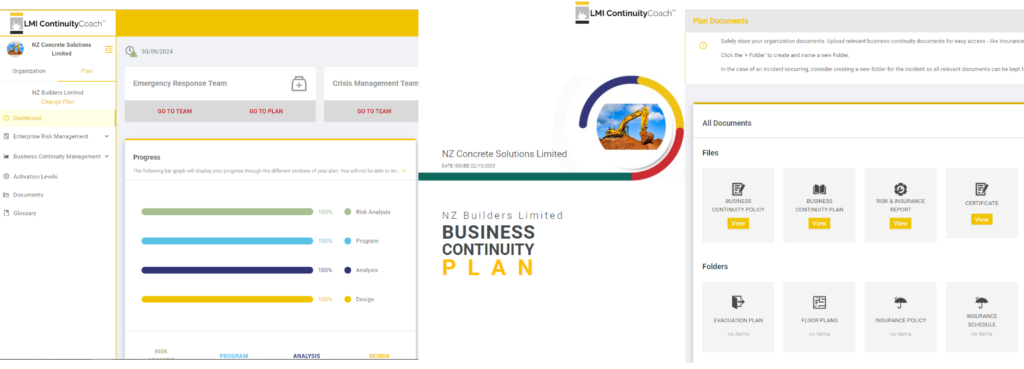Imagine a world where you could run your business without worrying about anything unexpected coming along to knock you off track. No economic downturns, no new government regulations, no natural disasters, no accidents on site, no nightmare customers, no staffing issues, no defective products, no unpaid bills, no stolen tools. Then all you have is upside, your profits can be locked in and your stress levels evaporate. That really is the holy grail for anyone in business!
OK, so eliminating all risks might be impossible, but what you can do is plan for them, so that when they do happen can minimise their impact.
It is also important to differentiate between positive risks, the ones you take to grow your business, such as expanding into a new area or taking on more staff, vs negative risks (threats).
There are three primary steps to eliminating downside risks.
Step 1: Risk Identification
First, you need to know all the risks that you face. Without a meaningful categorisation this can be difficult. Categories of risk may include:
- Natural Risk
- Security Risk
- Technology Risk
- Workspace Risk
- Supply Chain Risk
- Environmental Risk
- Product Liability Risk
- Financial Risk
- Economic Risk
- Human Risk
- Governance and Legal Risk
- Reputational Risk
- Business Risk
Within each category are individual hazards. It usually takes an experienced risk professional to help company directors and business owners complete this process, but there are inexpensive software tools that can make it much easier.
Step 2: Risk Analysis & Quantification
Once you have identified the risks, each one needs to have a price attached to it. That is, what is the cost to your business if that particular event was to happen? What would it cost if a bad customer kicked off? Or a disgruntled employee? Or there was a cyber attack, or an economic downturn? Or a serious accident involving key people in the company? Identifying the likelihood (how often) and severity (how costly) of each risk allows us to make the cost calculation.
Once you know the cost of each risk we move on to the next step.
Step 3: Risk Treatment
This is where we work out the most cost-effective way to deal with each risk. That is, what is the cheapest solution we can implement to get the biggest reduction in risk? There are four options:
- Ignore it (do nothing)
- Avoid it (don’t do the thing that is creating the risk)
- Reduce it (implement an approach that minimises the cost or likelihood of the event happening)
- Transfer it (pay an insurer to take on the risk instead)
Various treatment options may include:
- Additional training for staff, such as driver safety, customer relationship management, contract management, technical skills
- Incentive programmes for staff, such as for safety, customer feedback, sales targets, defect complaints
- Investment in security systems, fencing, cameras, fire prevention measures, lock boxes for tools and equipment
- Written policies
- Systems and processes
- Professional advice
- Reviewing contractual terms & conditions
- Insurance
The theory here is simple and the effect can be transformative (both for the business and personally) for those that do it well. But it will generally only happen with high level engagement by the business principals, the support of a professional risk manager and the right tools.
In Summary
Eliminating risk might be impossible, but planning for a crisis and minimising the cost of risk is one of the most important responsibilities for any business owner. Yet many are not adequately doing so, or doing so in a haphazard way that can lead to gaps. With the right advice and following three simple steps many of these threats can be eliminated or the cost of them substantially reduced.
Builtin’s Offer
LMI’s Continuity Coach portal helps small businesses to identify, evaluate and quantify their risks. It produces documents to assist with the treatment and management of theses risks, including a disaster recovery/business continuity plan. It is also a one-stop cloud-based repository for all critical documentation and contact details for the business should a crisis occur.
Purchase an annual subscription to Continuity Coach ($500+GST per year) and a Builtin Risk Adviser will work with you to configure it to suit your business for a discounted service fee of just $500+GST. This includes support for however long it takes to complete your initial set up of the system. For Builtin insurance customers annual reviews will be conducted free alongside your insurance renewal.


